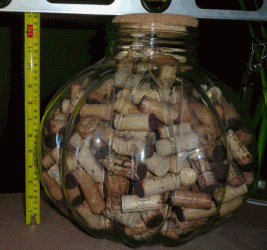I would have had thousands of cork bottled wines over the years with very few cork tainted and I rarely drink a wine under 5 years old and most 8-10 years +.
I've had plenty of dried out, breaking corks which can impact oxidisation etc and plenty of wine that's over the hill or been light/heat effected.
The real problem with cork was that we were sold the low end stuff in the 90's and beyond.
The whole issue of corks as a wine bottle seal has been examined widely and professionally, but probably not updated in recent years as the general quality of corks available in Australia has improved. But the non-taint issues haven't really changed with taint-free "natural" corks.
From Huon Hooke: Screwcaps aren’t necessarily the best closure, but they’re arguably the best we have at present and much more consistent than cork. Winemakers tell me cork quality has improved in recent times, but I don’t see the evidence in the thousands of wines I taste each year.
Screwcaps are arguably the best closure we have at present and much more consistent than cork, writes Huon Hooke.

www.smh.com.au
There is a wide variation in the threshold of detection/concern with TCA. I'm at the low threshold end of the spectrum. I've seen on many occasions wines that to me were clearly tainted being happily consumed by others. I've been to wineries where a half-empty bottle opened and provided for tasters the day before was clearly and quite badly (to me) tainted, or one just opened and checked by the staff, clearly tainted. I've seen a barrel sample extracted two days prior and sealed with a cork open clearly tainted.
Before I pretty much stopped buying cork-sealed wines I used to keep records of faults, including taint, oxidation, cork-related off-flavours and the taint rate was over 4% on average. I reckon I've probably tasted (not drunk) over 20,000 cork-sealed wines, I've been to a lot of tastings and winery visits over 50 years.
Of the many tainted wines I've taken/sent back for replacement I've never had my claim rejected, including one where the winemaker thought it wasn't tainted but the machine analysis showed it was, at a low level.





















